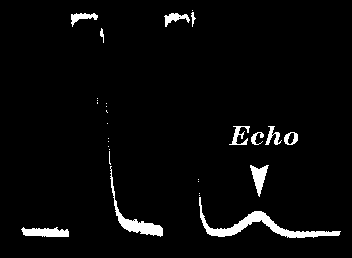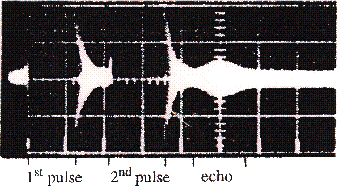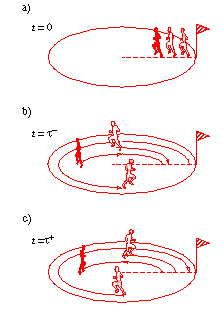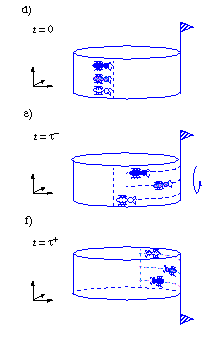Two-pulse echo
In 1950, Erwin Hahn [1] astonished the scientific community with his discovery of nuclear spin echoes (Figure 1). Eight years later, Richard Blume [2] reported the first observation of an electron spin echo.
In magnetic resonance, different types of spin echoes can be distinguished. Two of them can easily be related to every day life.
For one type of echoes a parallel introduced by Hahn can be drawn between the precessing magnetic moments and runners at a race track, starting at the same time (t=0) (Figure 3a). They will spread out due to their different individual speeds (Figure 3b). At time t = tau, the runners suddenly turn around and start running in the opposite direction. It is obvious that when they do not change their speed, they will meet each other at t = 2 tau (Figure 3c).
According to Abragam, the other type of echo can be visualized as follows. Let us assume that at a time t=0, ants start to crawl at different speed along the edge of a pancake (Fig 3d). At time t = tau, the pancake is turned around (Figure 3e). If the ants keep crawling in the same direction in space along the edge of the pancake, they will meet one another at time 2 tau (Figure 3f).
Selected reference
[1] E. Hahn, "Spin echoes", Phys. Rev. 80, 580 (1950).
[2] R.J. Blume, "Electron spin relaxation times in sodium-ammonia solutions", Phys. Rev. 109, 1867 (1958).
[3] A. Ponti and A. Schweiger, "Echo phenomena in electron paramagnetic resonance spectroscopy", Appl. Magn. Reson. 7, 363 (1994).



